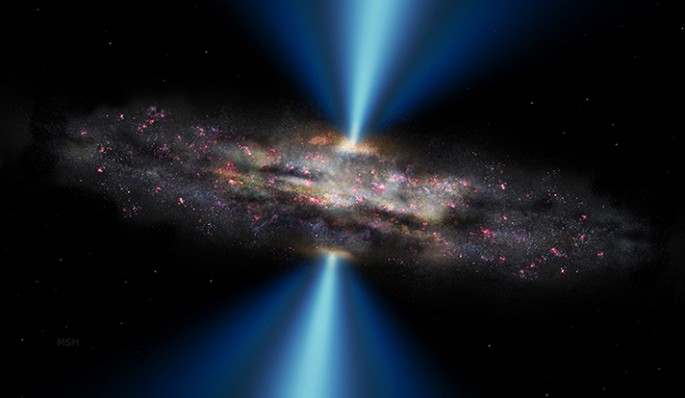Scientists have detected a supermassive black hole that originates from the early stages of the universe where it became too large to contain inside its host galaxy.
An international team of astronomers from Harvard University, Yale University, the University of Hawaii, Oxford University, ETH Zurich, the Max-Planck Institute and INAF-Osservatorio Astronomico di Roma detected this unusual black hole when they were in the process of mapping the developmental stages of supermassive black holes during the cosmic span of time.
According to co-author of the study and astrophysics professor from Yale, C. Megan Urry, this survey's focus was to observe average cosmic objects and not exotic ones. The project's aim was to target moderate black holes that are found in typical galaxies today and it has been shocking to observe a ginormous black hole located in a deep field.
Researchers believe that this black hole was formed during the early formation stages of the universe some 2 billion years after the Big Bang event. This abnormally large black hole is found in the CID-947 galaxy where it is believed to possess the mass of 7 billion suns, which could be one of the largest black holes ever detected.
Scientists were also surprised when they found out that the mass of the galaxy surrounding the black hole is of average size similar to most galaxies, meaning that this supermassive black hole is existing inside an average sized galaxy, according to lead author of the study, Benny Trakhtenbrot from ETH Zurich.
Other galaxies in the universe like the Milky Way usually possess a black hole in their core that can typically hold a really large amount of solar masses. These new findings however, contradict the belief that galaxies also expand in size in relation to the size of their black holes that also debunks past theories about how radiation leads to the expansion of black holes and prevents star formation processes.
Scientists also believe that stars are still constantly being formed inside the galaxy CID-947 where the galaxy is most likely still in the process of development. If this is proven, then the development of the supermassive black hole inside this normal sized galaxy opposes what was previously traditionally thought of galaxies and their black holes.
This new study is published in the journal Science.



























